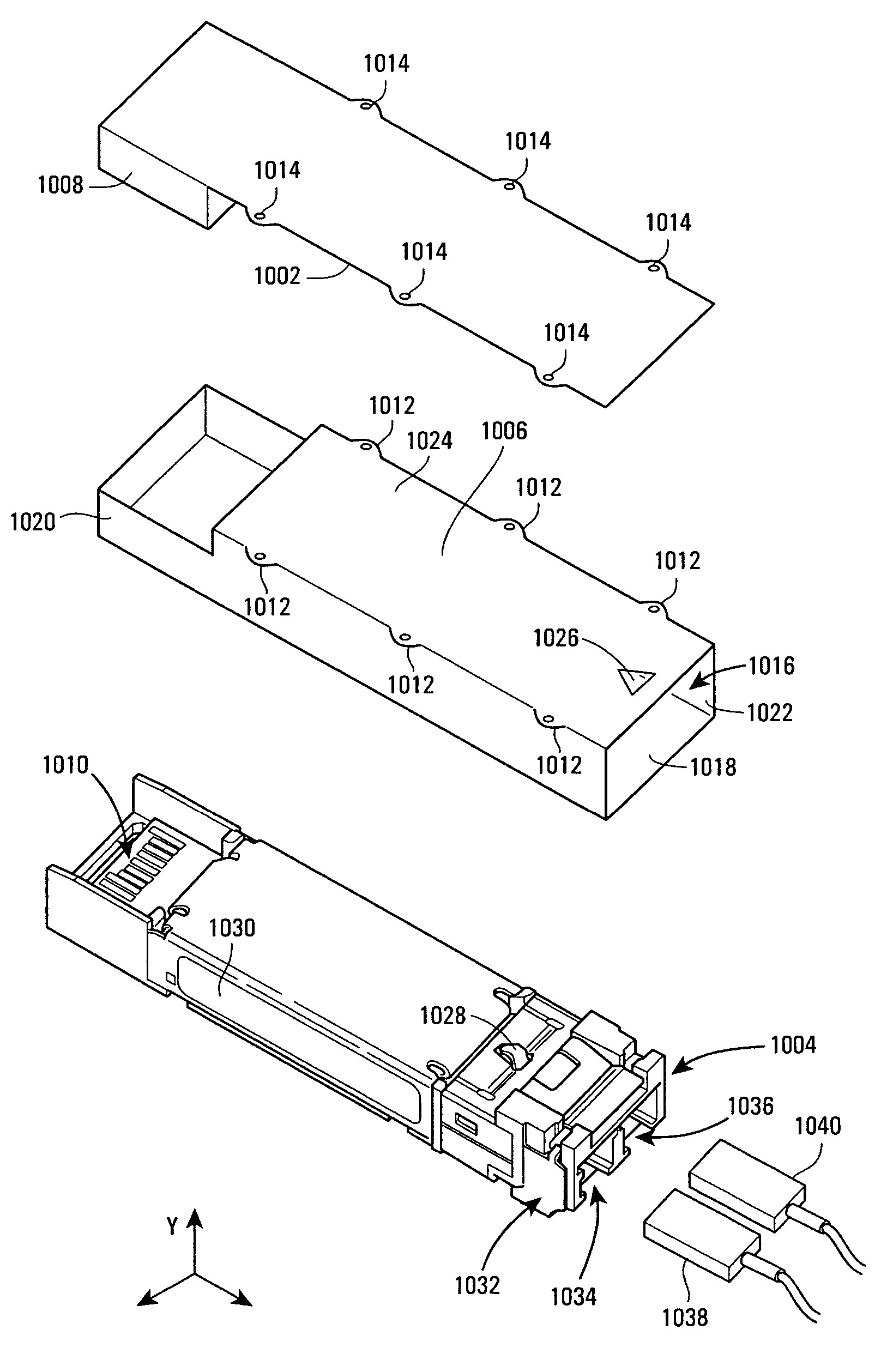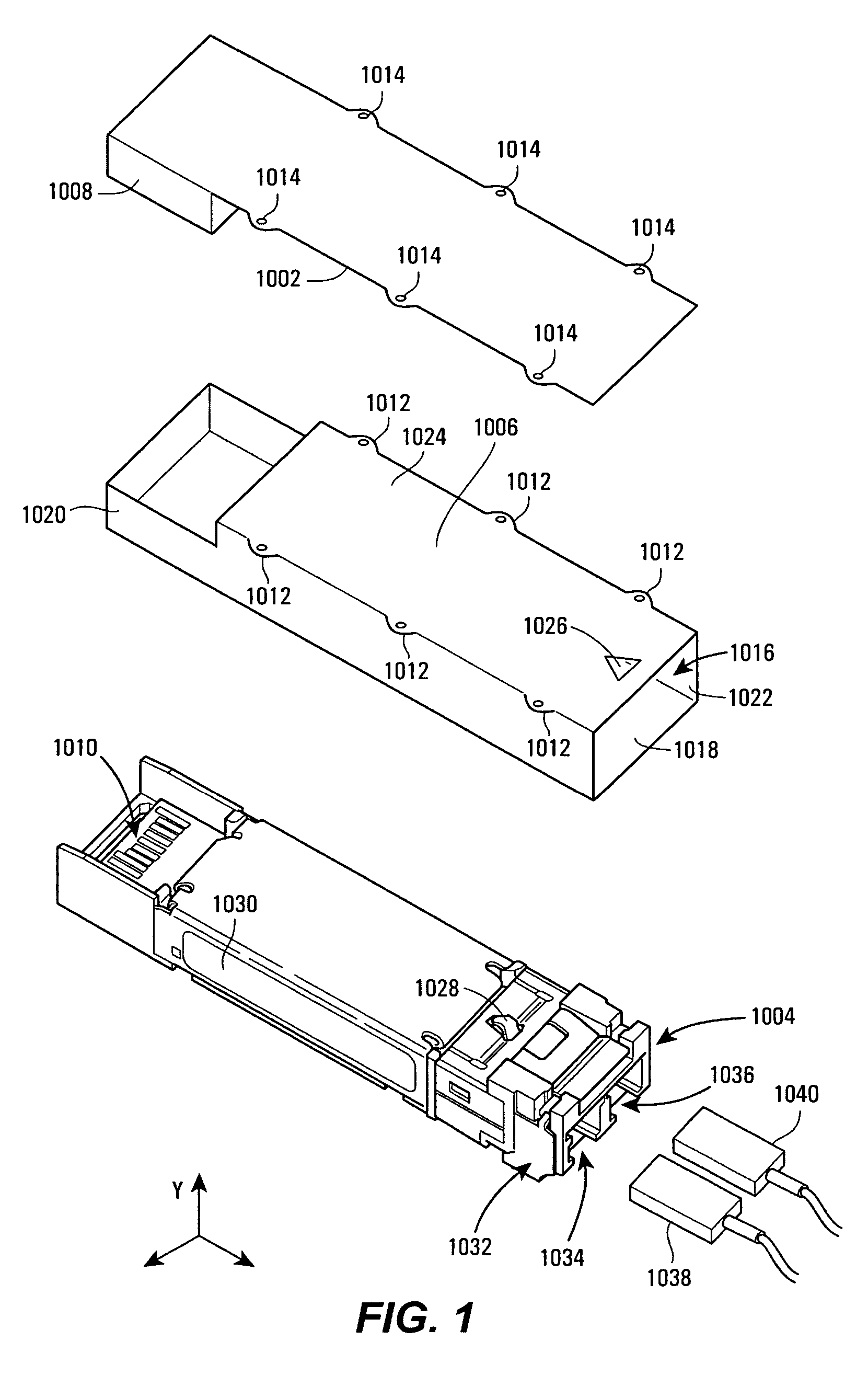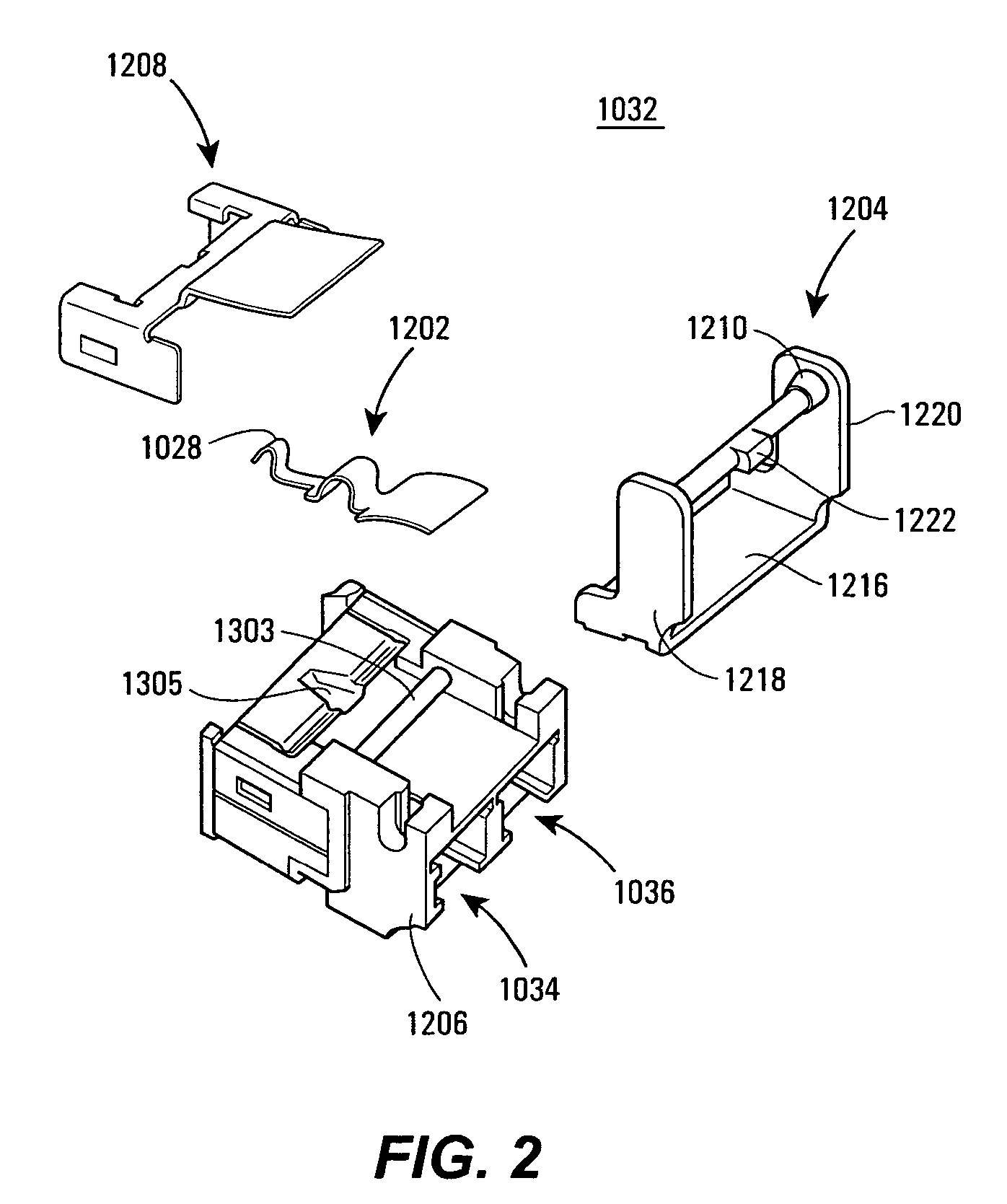Optical module with latching/delatching mechanism
a technology of optical modules and latching mechanisms, applied in the direction of optical elements, coupling device connections, instruments, etc., can solve the problems of incompatibility of transceiver manufacturers, inability to accurately fit the mounting cage of modules, and inability to meet the requirements of network devices
- Summary
- Abstract
- Description
- Claims
- Application Information
AI Technical Summary
Benefits of technology
Problems solved by technology
Method used
Image
Examples
Embodiment Construction
[0029]Numerous examples are provided of latching mechanisms that may be selectively latched and delatched with a casing. The examples may be used with, and are described in relation to, an optical module that may be plugged into a cage. Although example optical modules are described, such as small form factor pluggable (SFP) optical transceivers, the present disclosure is not limited to such example devices. Furthermore, while some example implantations are illustrated, persons of ordinary skill in the art will appreciate that other implementations may be used and, thus, fall within the present teachings.
[0030]FIG. 1 illustrates an unassembled computer board assembly 1000 that includes a host board 1002, an optical module 1004, and a cage 1006. The assembly 1000 may be part of processor-based system, such as a switch, router, server, or personal computer. Example standards for such system devices include asynchronous transfer mode (ATM), fiber-distributed data interface (FDDI), Fibr...
PUM
 Login to View More
Login to View More Abstract
Description
Claims
Application Information
 Login to View More
Login to View More - R&D
- Intellectual Property
- Life Sciences
- Materials
- Tech Scout
- Unparalleled Data Quality
- Higher Quality Content
- 60% Fewer Hallucinations
Browse by: Latest US Patents, China's latest patents, Technical Efficacy Thesaurus, Application Domain, Technology Topic, Popular Technical Reports.
© 2025 PatSnap. All rights reserved.Legal|Privacy policy|Modern Slavery Act Transparency Statement|Sitemap|About US| Contact US: help@patsnap.com



